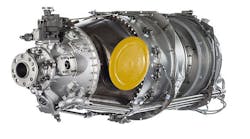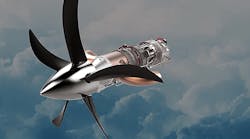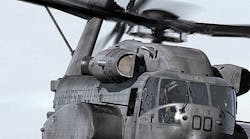Aircraft engine designer and builder Pratt & Whitney Canada launched two new turboprop engines it said would be benchmarks for performance and fuel-efficiency, delivering 15% more power and 5% better specific fuel consumption. The new PT6A-140A turboprop engine and the new PT6A-140AG variant raise P&WC’s turboprop family to more than 70 engines.
"Today's announcement demonstrates our ability to continuously innovate and raise the bar with the PT6A family to make the world's best engines even better," stated Denis Parisien, vice president - General Aviation. He called +70 PT6A engine models used for over 125 different aircraft applications worldwide, “a testament to the PT6A's unmatched versatility, performance, and reliability."
Although P&WC is a subsidiary of Pratt & Whitney, the turboshaft engine specialist that is an operating unit of United Technologies Corp. However, P&WC specializes in engines for smaller aircraft and the general aviation market, and conducts its own product research and development, as well as the manufacturing of its engines at its manufacturing center in Longueuil, Quebec.
P&WC detailed the new PT6A-140A engine has no mandatory time requirements for warm-up or cool-down, so operators are able to maximize their own productivity and engine efficiency. It also called to attention to its “ease of maintenance and flexibility for high-cycle operations,” which help to give the engine one of the longest time-between-overhaul (TBO) intervals available.
More than that, TBO can be extended up to 8,000 hours or 12 years depending on the operation, P&WC claimed, adding that this factor is unrelated to engine cycles. It stated the PT6A-140A has a minimum component life limit which is 50% higher than competing engines.
Both new engines reportedly are optimized for the "hot and high" environments, and have 867 mechanical shaft horsepower (SHP) and 1,075 thermal SHP, and both offer full-load takeoff at maximum power available at 111˚F (44˚C).
The developer said the PT6A's modular design and externally mounted fuel nozzles make it “the easiest engine in the utility market” to access and maintain. Simple routine engine inspections can be done while still on-wing, in the field, or in the hangar, eliminating surprises, reducing costs and providing peace of mind.
“More time on-wing and a predictable and planned maintenance environment mean more revenue for operators,” according to P&WC.
The general aviation market may become more crowded with engine options soon, with the report recently that GE Aviation is developing a new family of turboprop engines. GE also announced a new agreement with OEM Textron Aviation to install its new single-engines in a new turboprop aircraft for business and general aviation.
"No one understands the needs of general aviation better than we do," stated P&WC’s Parisien. "We built the industry with the PT6A turboprop engine more than five decades ago and we've never stopped innovating since. These two engines are a demonstration of the advancements we've made and our focus on delivering the best engines for customers and operators."









